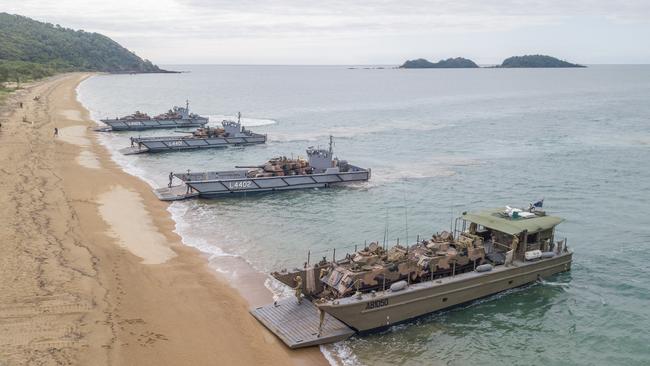Need for heavier landing craft recognised
The army has a multi-phase acquisition program that will introduce a series of landing craft and amphibious vehicles aimed to operate in northern Australia and the Pacific region.

The Australian Army has a multi-phase acquisition program that will introduce a series of landing craft and amphibious vehicles aimed at transforming its ability to operate in the littoral environments of northern Australia and the Pacific region.
Defence has realised that activities in the region, whether it be operations and exercises or humanitarian aid and disaster relief (HADR) missions, will need equipment to be transported on water over longer distances.
“It’s the recognition that whether it’s for humanitarian assistance, international engagement, or high-end operations and high-threat environments, there is a driving perspective that we will be required to be on the water at some point – either transiting or loitering or supporting from,” acting head Land Capability Brigadier Jeremy King said recently.
“As it stands at the moment, we have our LHDs in terms of capital ships and then a ship-to-shore capability with our (LCM-1E) landing craft, but we have identified that we need to be independent if we lose that blue water capability.
“We need to have platforms that can operate independently from the capital ships.”
Under the multi-phase Land 8710, Defence will seek to acquire a cascading suite of capabilities, beginning with the replacement from 2026 of the army’s LCM-8 (landing craft mechanised) introduced in the 1970s; and its Vietnam-era LARC-V (Lighter Amphibious Resupply Cargo) fleets. Under this first phase of the program, Defence is currently considering industry responses to its $800m request for tender (RFT) for a Littoral Manoeuvre Vessel – Medium (LMV-M) to replace the ageing LCM-8 fleet.
Included in the organisations that have responded to the tender are Australia’s Birdon Group, the Australian Maritime Alliance (comprising Serco and Civmec); Landing Craft Australia (Navantia Australia and UGL) and a team which includes Austal, BMT and Raytheon Australia.
The new LMV-M will be a steel-hulled vessel that is about 20 per cent larger than the 59-ton LCM-8 and have a longer range than its predecessor – typically between 1000 and 1200 nautical miles (1850-2200km). This is in recognition both of the requirement to project forces further into the region and the growing size and weight of the new armoured vehicles.
Up to 18 vessels will be constructed at Henderson in Western Australia and the announcement of a preferred bidder is expected before the end of this year.
The LARC fleet will be replaced by a new amphibious vehicle (Littoral Manoeuvre Vessel – Amphibious) under a separate element of Land 8710 Phase 1.
Phase 2 of the program will seek to acquire a number of heavy landing craft (LCH) in the 3000- 4000-ton class to replace the army’s Balikpapan-class vessels which were retired in 2012.
These heavier vessels will be capable of carrying a number of tanks or infantry fighting vehicles across larger distances.
A future Phase 3 of the program will consider the purchase of a fleet of riverine (Littoral Manoeuvre – Riverine) vessels capable of operating in the coastal waterways of northern Australia or the Pacific islands.
“What we’ll end up with is a set of overlapping, cascading effects that are primarily designed to work in that shore-to-shore environment, but also able to project into the region either independently or part of an amphibious task group,” Brigadier King said.
“It’s important to realise that army equipment is getting heavier and therefore what we need are capabilities that can project into the region.”


